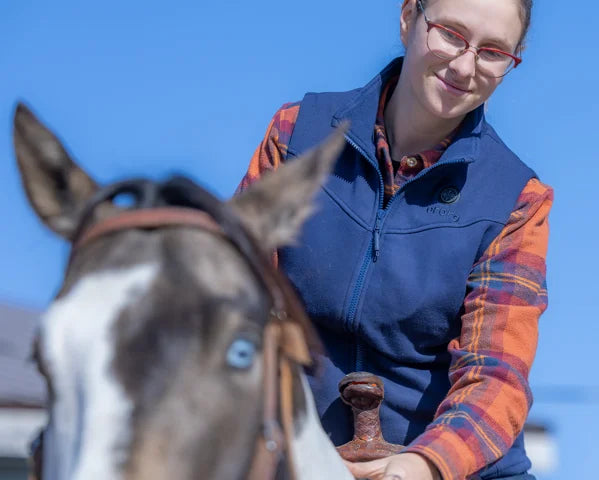8 Tips for Shoveling Snow Safely and Keeping Warm in Frigid Temperatures
Shoveling snow is often unavoidable during the winter months, but it’s more than just a simple chore—it’s a full-body workout that can put significant strain on your heart and muscles. In fact, the Vermont Department of Health reports that about 100 people die annually in the U.S. while shoveling snow, often due to heart-related incidents caused by overexertion in the cold. Proper preparation, technique, and recovery are essential to keep yourself safe and warm while tackling the snow.
Here’s your ultimate guide to safely shoveling snow, complete with tips on staying warm, preventing injury, and using ororo heated apparel to make the process more comfortable.
1. Dress Smart: Layer Up with the Right Gear
The right clothing is essential for staying warm and mobile while shoveling. A smart layering system allows you to adapt to changing conditions, keeping you comfortable throughout the task.
- Base Layer: Start with an Aoraki Merino Wool Blend Baselayer, which is designed to wick moisture away from your skin while providing natural warmth and comfort.
- Middle Layer: For insulation, choose a recycled fleece vest or lightweight down vest. These options trap heat without adding bulk, allowing you to move freely as you work.
- Outer Layer: Protect yourself from wind and snow with a puffer jacket or the Wayne 5-Zone Heated Hoodie, which provides warmth and weather resistance.
Add a heated scarf to protect your neck, along with heated socks and durable boots for ultimate warmth and comfort. This layering system ensures you’re prepared for even the coldest conditions.

2. Warm-Up Before Shoveling
Shoveling is a physically intense activity, and jumping into it without preparation can lead to muscle strain or injury. Spend 5–10 minutes warming up before heading outside:
- Do light stretches for your legs, arms, and back to loosen up your muscles.
- Take a brisk walk or jog to get your blood circulating and to raise your body temperature slightly.
Starting with warm muscles can prevent stiffness and make shoveling easier on your body.
3. Use the Right Gear and Shoveling Techniques
Your tools and techniques play a major role in reducing the physical strain of shoveling snow.
- Ergonomic Shovel: Use a lightweight, ergonomic shovel with a curved handle to minimize bending and reduce the risk of back injuries.
- Proper Technique:
- Bend at the knees, not your back, when lifting snow.
- Push the snow to the side whenever possible, instead of lifting and throwing it.
- Take small scoops rather than trying to clear large piles all at once.

4. Watch Out for Slippery Surfaces
Slips and falls are common when shoveling snow. Wear boots with good traction and consider spreading salt or sand on icy surfaces before you start.
5. Protect Your Hands and Feet from the Cold
Your hands and feet are the first to feel the chill in freezing temperatures, so make sure they’re properly protected:
- Gloves: Opt for insulated gloves like buffalo gloves or leather gloves to keep your hands warm and functional while handling the shovel.
- Socks: Cold feet can ruin the experience. Try wearing ororo’s heated wool socks 4.0 to keep your toes warm, even during long sessions outside.
- Boots: Choose insulated, waterproof boots with good traction to protect your feet and prevent slipping.

6. Take Regular Breaks and Stay Hydrated
Shoveling snow is an intense workout, so it’s crucial to pace yourself:
- Take Breaks: Rest every 10–15 minutes to prevent overexertion and allow your body to recover. Use these breaks to hydrate and stretch.
- Hydrate: Even in cold weather, your body loses fluids, so drink water regularly to stay hydrated. If you prefer, sip on warm tea or coffee during breaks to maintain your energy.
7. Avoid Overexertion
Cold temperatures can put additional stress on your heart, especially if you’re older, have pre-existing health conditions, or live a sedentary lifestyle. To avoid overexertion:
- Shovel slowly and steadily.
- If the snow is heavy, clear smaller sections at a time.
- Ask for help or use a snow blower for larger areas.
If you experience chest pain, dizziness, or shortness of breath, stop immediately and seek medical attention.
8. Cool Down and Recover After Shoveling
Once you’ve cleared the snow, don’t forget to cool down and help your body recover:
- Stretch Again: Focus on your arms, legs, and back to relax your muscles and prevent stiffness.
- Rehydrate: Drink water or a warm beverage to replenish your fluids.
- Rest: Give your body time to recover, especially if you’ve been shoveling for an extended period.

Shoveling snow doesn’t have to leave you cold, exhausted, or injured. By dressing in warm, layered clothing, using proper shoveling techniques, staying hydrated, and pacing yourself, you can tackle even the heaviest snowfall safely. And with ororo’s heated apparel, you can stay comfortable and warm no matter how frigid the weather gets.
Take care of yourself this winter, and make snow shoveling easier and safer with the right preparation and gear.




